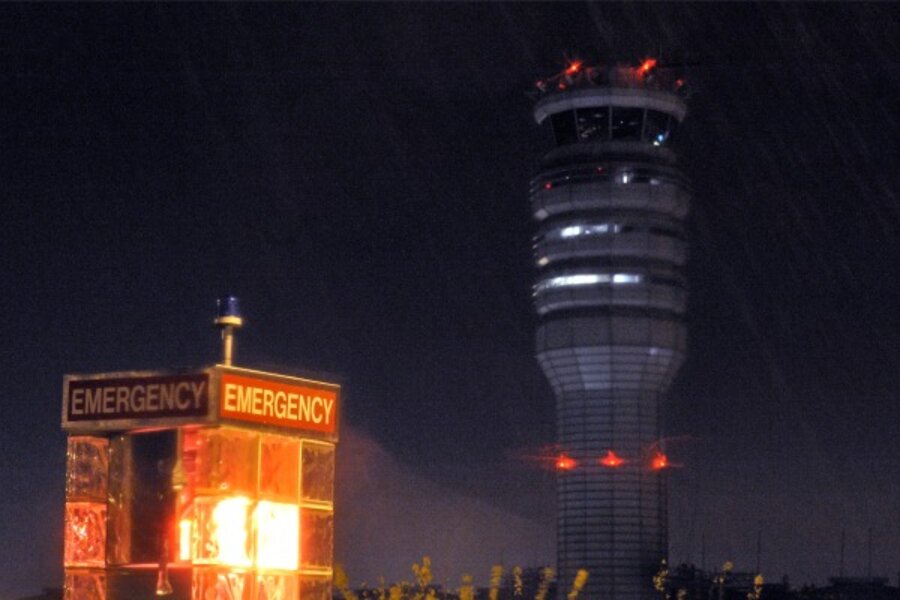Controller's mistake at Reagan airport shows safety plans worked
Loading...
The fallout from the incident at Washington’s Reagan National Airport, where two planes were forced to land without clearance or guidance from the tower continues to mount. The sole on-duty-control tower supervisor at the airport on the overnight shift Wednesday may have fallen asleep, officials say.
• The controller, whose name has not been released, was suspended by the Federal Aviation Administration (FAA) Thursday.
• Secretary of Transportation Ray LaHood has ordered the airport to add an additional person to the overnight shift and has advised the dozens of airports that operate overnight with only one controller to review their policies.
• Rep. John Mica (R) of Florida, chairman of the House Transportation and Infrastructure Committee, said his committee would investigate the incident.
But the event should not be characterized as “a potential major catastrophe” averted, says retired American Airlines pilot Mark Weiss. “There are layers of protection that are built into the system,” Mr. Weiss told Washington’s Fox affiliate. “Other air traffic controllers took over and filled in the gaps.”
Both planes were in contact with a regional air-traffic controller 40 miles away in Warrenton, Va., Peter Knudson, a spokesman for the National Transportation Safety Board, told the AP. Regional controllers guide planes in and out of regional airspace, but controllers within three miles of an airport handle takeoffs and landings, ensuring runways are clear of other planes and equipment before giving planes the go ahead to land.
In lieu of clearance from the tower, the planes followed protocol for such situations. They announced their plans to land on a radio frequency that could be picked up by other pilots, so others would know their intentions. Such protocols are routinely used when landing at smaller airports that do not have air traffic controllers.
Weiss said there was low risk of disaster in Wednesday night, because Reagan Airport has low traffic at midnight.
“The real danger becomes the fact that you don’t know if the runway that you’re landing on is clear of obstacles.”
Such an incident occurred in 1991, when a USAir Airlines Boeing 737 landed on a runway already occupied by a small commuter jet, after an error by an air traffic controller. Thirty-four people died.
“You also don’t know if there are any trucks on the runway, any people on the runway, particularly late at night,” said Weiss.
FAA Administrator Randy Babbitt, a former airline pilot, expressed "outrage" over the incident, but said FAA safeguards worked as planned.
"Fortunately, at no point was either plane out of radar contact and our backup system kicked in to ensure the safe landing of both airplanes," said Mr. Babbitt in a statement.
[Editor's note: An earlier version of this story incorrectly said a Skywest Airlines flight landed on a runway occupied by another plane. The Skywest plane was actually the plane on the runway when a USAir Boeing 737 collided with it. The story also incorrectly attributed a statement by FAA Administrator Randy Babbitt to Secretary of Transportation Ray LaHood.]





